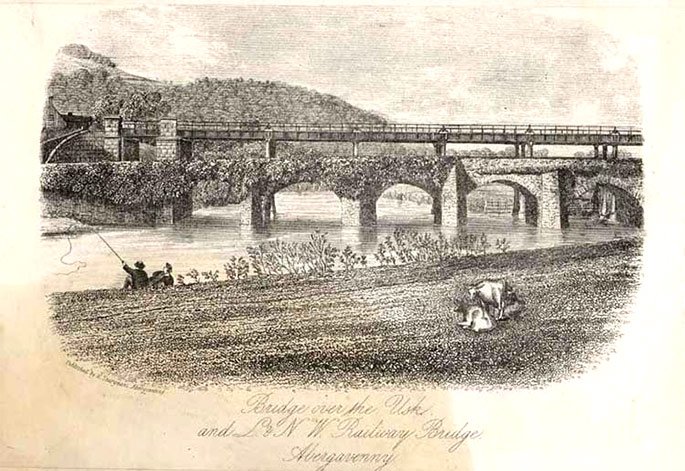When the first railways arrived in town it was All Change in more ways than one. Helen Morgan from Abergavenny Local History Society reports

Image courtesy of Abergavenny Museum
In the mid-19th century Abergavenny was a mess. Filthy streets, dodgy water and erratic gas supplies were the norm. But in 1853, a group of local tradesmen took action and, during a meeting at the Angel Hotel on October 3, took over the role as Improvement Commissioners. They prompted the Abergavenny Improvement Act 1854 which led to proper paving, street lighting, the Llwyndu water reservoir, sewage disposal and eventual takeover of the town’s gasworks. And just in time. The population of 2,500 in 1801 had already risen to 5,000. As the industrial revolution grew, Abergavenny expanded, too, as the rail network spread to transport coal, iron and goods across Britain and to the rest of the world. By 1898 the town’s population topped 9,000.
The railway between Hereford and Pontypool was completed in 1853 and the Monmouth Road station opened on January 2, 1854. Eight years later, the London & North Western Railway had finished the line from Abergavenny Junction via Brecon Road to Brynmawr and, by 1879, the line went all the way to Merthyr.
Initially, the railway created few jobs, although it did enable the managerial classes to live in Abergavenny and commute to the quarries and ironworks near Clydach and beyond. The creation of marshalling yards, however, was a different story and resulted in a building boom in the late 19th century. Before that some workers lived in Frogmore Street which in the 1860s was a mix of retail and residential. The railway barracks on Brecon Road (now the Jehovah Witness hall) lodged many single men and locomotive crews who were away from home.
Victoria Street was built by 1871 and the census tells us that No 7 was home to a station master, his family and servant, while No 3 was home to a railway guard’s family. A decade later, the first terrace houses in St Helen’s Road were built and, by 1901, Sunny Bank and Park Street including the school were in evidence. On the other side of town, railway cottages near the Junction station were home to laundresses, shopworkers and workers from the Penyfal asylum as well as railwaymen.
By 1911, the Grofields had become a railway village and, from August 1914 until 1918, more than 100 locomotives played their part in the war effort, delivering coal to the Royal Navy.
The history lecture season resumes on September 11. For details go to www.abergavennylocalhistorysociety.org.uk
